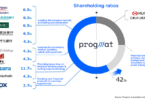The New York Federal Reserve (NY Fed) published a report on the financial stability implications of digital assets. It concludes that the risks have been small so far because of the size of the sector. But if it becomes larger, it could pose risks to the broader financial system.
It identifies many of the risks outlined in previous reports but with some nuances.
Digital assets have big booms and busts, with the Bitcoin price falling more than 70% from its 2021 peak. Other factors exacerbate these large price swings. They include what the Fed refers to as funding risk or run risks. A range of digital asset players have suffered runs, including centralized exchanges (CEXs), crypto lenders, stablecoins, and even DeFi protocols. The example of the latter was the Anchor Protocol relating to the collapsed Terra platform.
On top of the booms and busts, and the run risk, the sector uses a high degree of leverage which exaggerates the other risks. Plus, the crypto ecosystem is highly interconnected.
The NY Fed wrote about a lack of a strong and cohesive regulatory environment that amplifies the vulnerabilities. This is more about many crypto entities being offshore, or entities such as decentralized autonomous organizations (DAOs) lacking a clear legal status.
Stablecoins under the spotlight
Given the assessment focuses on financial stability, the NY Fed didn’t dwell on the threat of stablecoins to the singleness of money.
Instead, it is particularly concerned by stablecoins because of their interconnectedness – both within the crypto ecosystem and with the mainstream economy. They “appear to contribute not only to the instability of the digital ecosystem but also to systemic risk,” wrote the NY Fed authors.
While there’s a perception that stablecoins are redeemable, in a crunch only option for many people is to trade them in the secondary market.
Maturity transformation is a known issue in banking – where banks lend on mortgages against demand deposits. The NY Fed argues that maturity transformation can also happen with stablecoins if their assets are illiquid or have longer maturities. It acknowledges that the asset quality of the larger stablecoins has improved over time. However, a good 15% of Tether’s assets are still relatively risky, “making Tether riskier than most prime MMFs, a sector that experienced destabilizing runs in 2008 and 2020.”
The ease of switching between stablecoins can amplify the stablecoin run risk. Decentralized stablecoins such as the DAI (now USDS) are considered riskier because it takes longer for DAOs to react.
Regarding interconnectedness, stablecoins are used by lending protocols, so a run on a stablecoin results in users withdrawing lending and borrowing rates rising significantly.
What the NY Fed is really concerned about is if a large stablecoin had to suddenly liquidate a lot of Treasuries, then that could impact mainstream financial markets.
The paper also explores the growing interconnectedness between digital assets and mainstream finance in other ways.
This interconnectedness, combined with the volatility and fragility of crypto, and high leverage is why it considers digital assets a potential financial stability risk.






